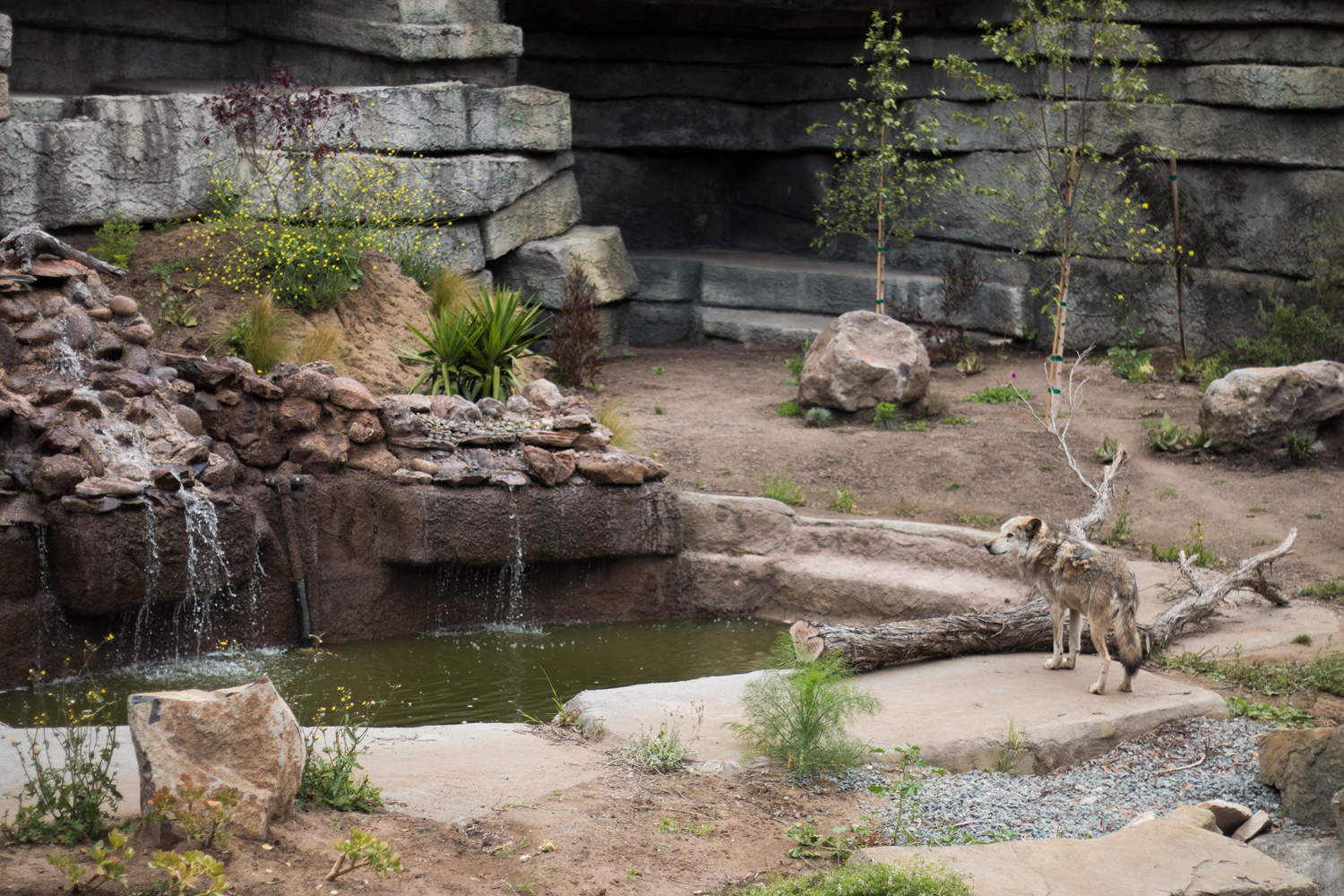Heads up, San Francisco, the SF Zoo has a new exhibit and it is captivating.
A few months ago, the zoo converted an enclosure that previously held Pike, the 32-year old polar bear who passed last year, into Wild Canyon, a new habitat for three Mexican wolves.
They are incredible to watch.
On our last two visits, we watched them run in a pack, trotting through their wide enclosure. The zoo has outfitted the exhibit with southwest shrubbery, dirt, and a trickling waterfall. There’s even an errant long horn skull. One section of the enclosure has a thick glass divider, letting you get close to the animals. A few feet away, a boxed-in viewing section surrounded by glass lets you get in the middle of the action and watch the wolves run past you, eying you as they do.

It doesn’t take much imagination to see that wolves, like most canines, are social animals. Their desire to interact with each other extends to you as well. We saw one wolf stop in its tracks and trot slowly next to a little boy running the length of its enclosure. On my visit, a wolf stopped to look at me with my camera for at least 5 minutes, before settling down and curling into a dog nap just a few feet away, very much reminiscent of a family dog taking a rest.
In a way, this is what zoos are about, right? To show us animals up close, so that we want to help their brothers and sisters in the wild. This is especially important for wolves. The exhibit does much to demystify the fearsome wolves of children’s fairytales. (Don’t get me wrong; I have no desire to be on the other side of the glass.)
In fact, the Mexican wolf is an endangered species, and the rarest of grey wolf subspecies in North America. While there used to be thousands of them in the wild, by the 1970s, there were only a handful. Today, there are just a little over 100 wolves in the wild.
This exhibit is part of a captive breeding program to reintroduce Mexican wolves back into the wild, and back into their native habitats. Silicon Valley even helped out to create an automatic feeding mechanism to limit human contact (such as through zookeeper feeding) with the wolves.
It’s a very cool new exhibit, that’s also doing great deeds. Go check it out!







